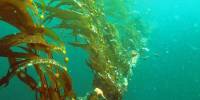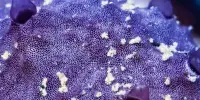Over millions of years, retroviruses have left a legacy in host genomes as endogenous retroviruses (ERVs), and their structure, diversity, and prevalence provide insights into the historical dynamics of retrovirus-host interactions. We discovered a recently expanded ERV lineage (phaCin- β) that is related to the New World squirrel monkey retrovirus in bioinformatic analyses of koala (Phascolarctos cinereus) whole-genome sequences.
Virus infections from the past can be found in vertebrate genomes. These genomes have been repositories for retroviruses that incorporated their code into germline cells and were inherited as endogenous retroviruses for millions of years (ERVs). Uppsala University researchers have published new findings about retroviral establishment in the koala genome. The results have been published in the journal PNAS.
By screening available koala genomes, we have identified novel ERV lineages. One of these is related to the squirrel monkey retrovirus, which is normally found in South/Central America. Many ERVs of this type are only found in a few koala individuals, which indicates that they are relatively new. It may even indicate an ongoing establishment in the population.
Mette Lillie
In addition to the previously known koala retrovirus, the researchers examined the koala genome and discovered new ERV lineages (KoRV). KoRV has been linked to koala illnesses such as cancer and is on its way to becoming established as an ERV in the population. This has contributed to the koala being viewed as a potential model for the establishment of retroviruses in real time and their health consequences, a potential that has now been reinforced by the unexpected distribution pattern of new ERV lineages.
“By screening available koala genomes, we have identified novel ERV lineages. One of these is related to the squirrel monkey retrovirus, which is normally found in South/Central America. Many ERVs of this type are only found in a few koala individuals, which indicates that they are relatively new. It may even indicate an ongoing establishment in the population,” says Mette Lillie, lead author of the study.

The large-scale sequencing of entire genomes from species populations allows researchers to draw parallels between the novel ERVs and retroviruses that are currently establishing themselves, such as KoRV. Based on the distribution pattern of ERVs in the population and comparisons of how ERV lineages differ, the researchers conclude that additional active retroviruses may be discovered in koalas and other animal species that share the same environment. The findings are fueling the search for potentially active retroviruses in Australian fauna that have yet to be identified.
The endogenous retrovirus (ERV) record in host DNA left by retrovirus infections in the germline over millions of years allows studies of historic retrovirus–host dynamics, which is increasingly relevant considering contemporary zoonotic viral transmissions and mounting efforts in conservation management of threatened species.
Retroviruses are a diverse group of RNA viruses that convert their genomes to proviral DNA and permanently integrate into the host nuclear DNA to produce virus offspring. Over millions of years, sporadic integrations in the host germline have left a record of historical retrovirus activity as inherited endogenous retroviruses (ERVs) in modern host genomes. ERVs are subject to the host genome’s molecular evolution and are frequently inactivated by mutation or recombination between the proviral long-terminal repeats (LTRs), resulting in the loss of proviral genes and the presence of a solitary LTR at the integration site.
The functional consequences of ERVs vary depending on the genomic architecture of the integration site and changes to the proviral sequence. The completeness of ERV structure, diversity, and prevalence throughout the host genome can provide valuable insights into the historical dynamics of retrovirus-host interactions.
“The ERVs that were left behind after retrovirus infections in the past now allow researchers to uncover historical interactions between retroviruses and animal species, such as mapping how virus transmission occurred. Variations in ERV distribution patterns within host populations can also be useful as genomic markers, for example, in the management and protection of endangered species “says Patric Jern, the study’s director.
















